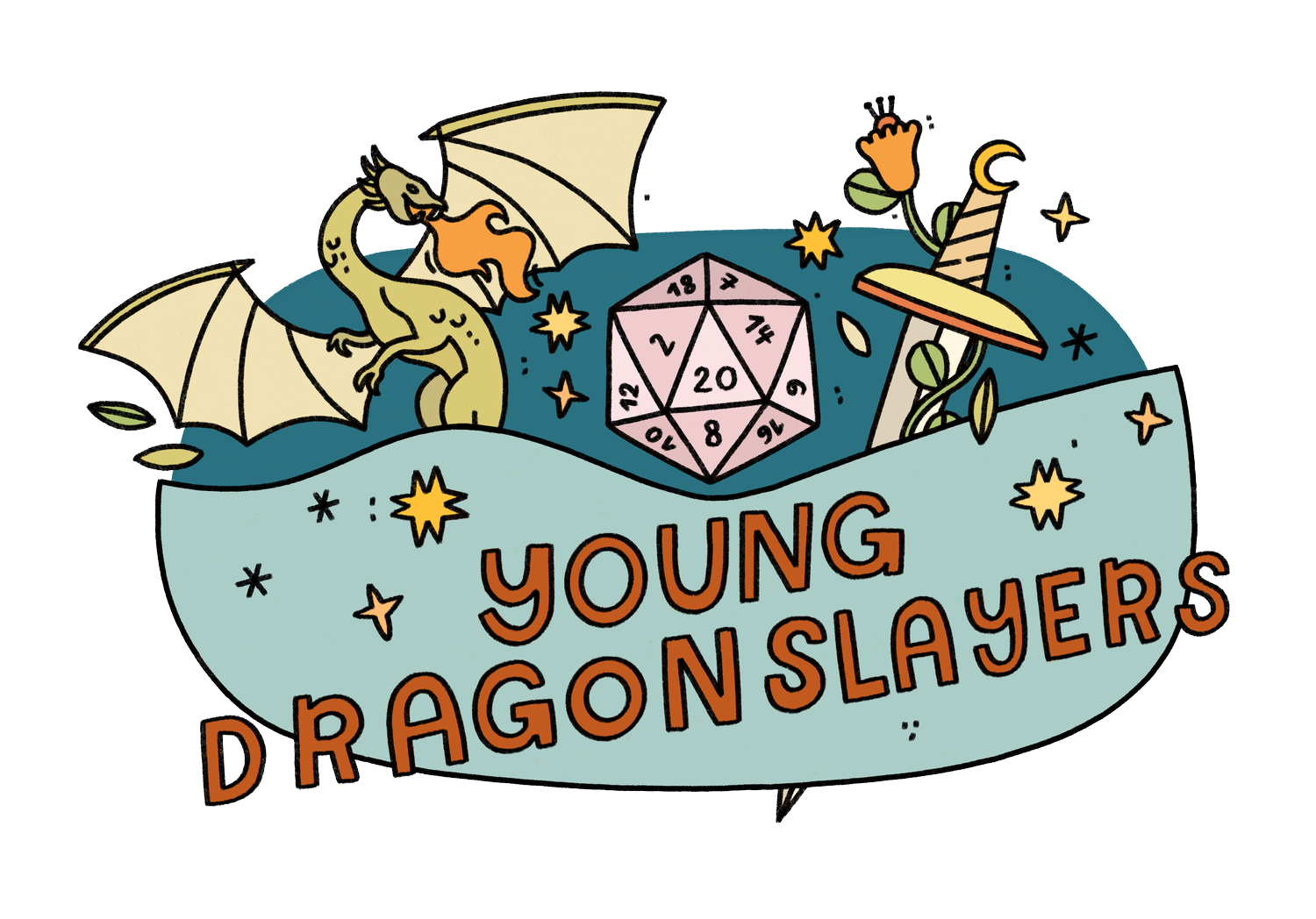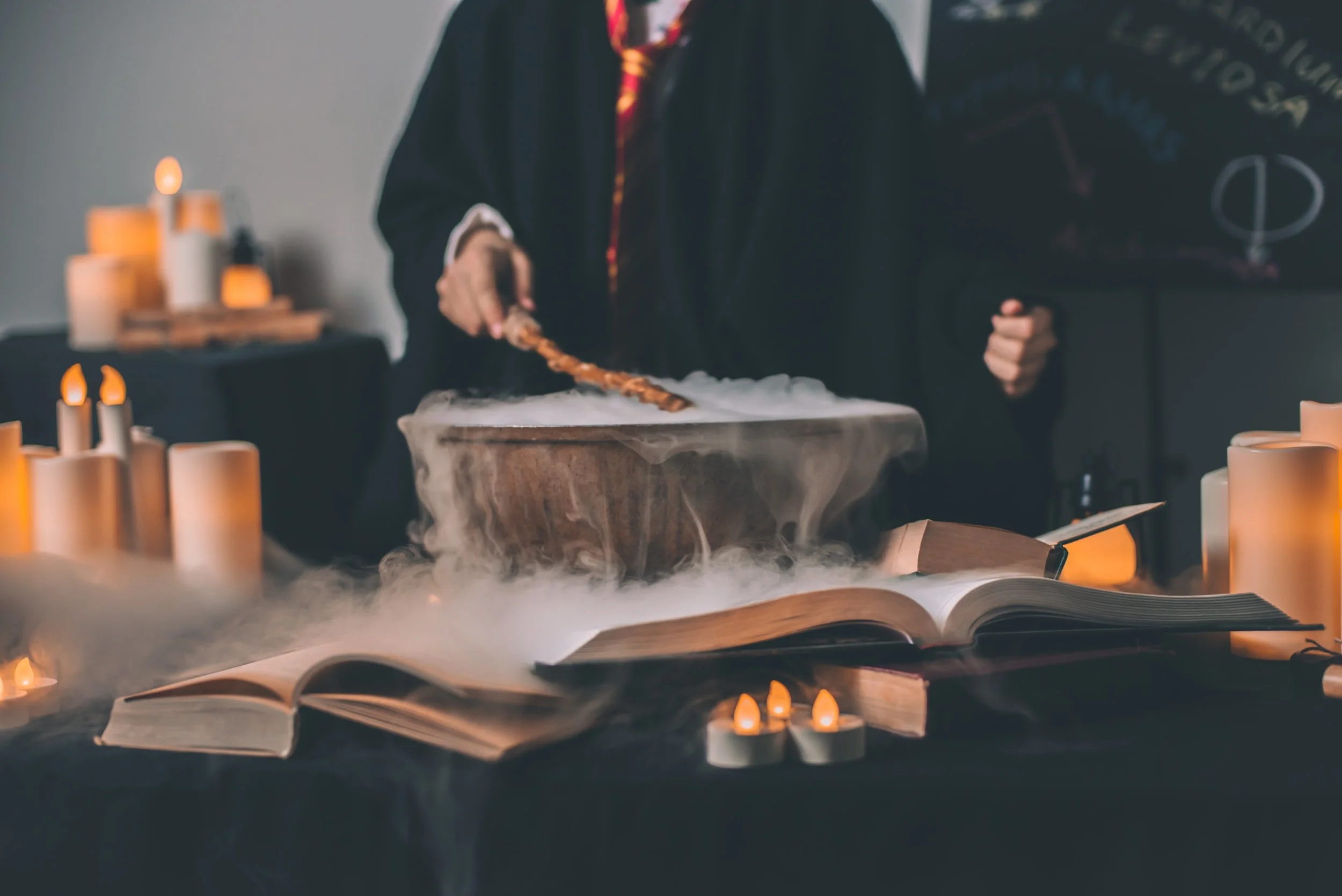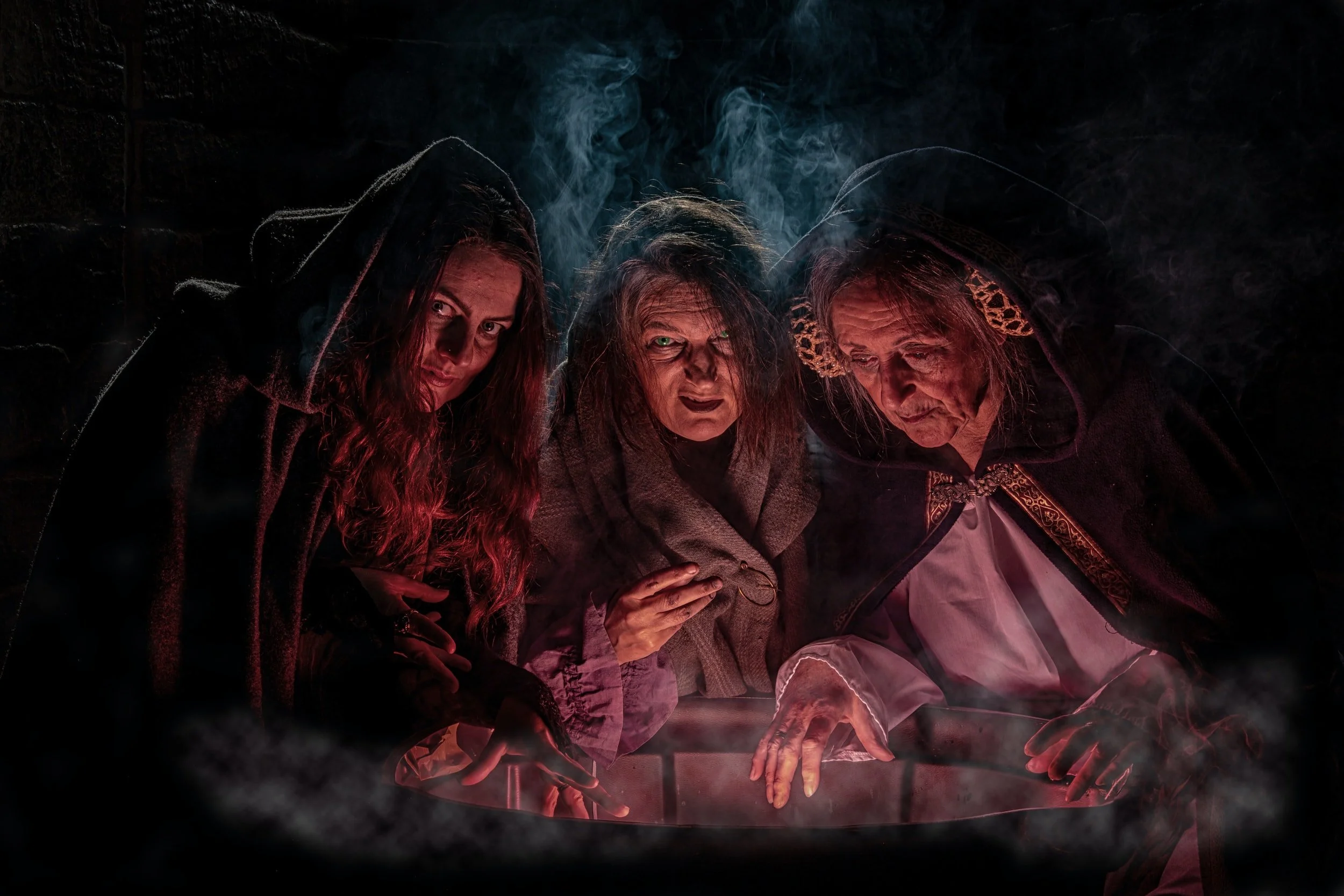Spellcasting 101: How D&D Spells Work, and How to Cast Them
Dear Young Dragonslayer,
Congratulations on your acceptance to our School of Witchcraft and Wizardry! It looks like the fine art of magic has caught your attention. In this letter we include a guide on all things spell-related from Dungeons & Dragons, 5th Edition.
In other words: Welcome to Spell Mechanics 101 – I’ll be your professor today.
Math, Science, History, and… Necromancy?
In Dungeons & Dragons, there are eight types of magic. They are called “schools” of magic, kind of like different subjects in school. Let’s learn a little about each of them:
Transmutation: quite simply: turn one thing into another. Just like in Transfiguration class at Hogwarts. The difference is that in D&D actually changes what an object is or what it’s made of, not just the appearance. Usually these spells require a starting material, like ingredients to cast a spell. Bake a cake instantly!
Enchantment: these spells are like charms in Harry Potter. You can take control of an animal, make someone your friend, or make a clone of yourself… more on that later. For example: Hermoine used Confundus during a quidditch game to charm another player, making him confused and dazed. This would be an enchantment spell in D&D. Enchantment spells can also be used to give normal items magical properties.
Illusion: fake it till you make it! Illusion is used to fool, trick, disguise, and mess with the minds of your enemies. Harry Potter’s invisibility cloak is an item that is enchanted with the properties of an illusion spell.
Conjuration: unlike illusion magic, conjuration spells make real things appear. Summon an object, a platform to stand on, or an entire tsunami to wash away evil. Hermoine uses a conjuration spell (Avis) to summon birds. There’s just one catch: every time you summon something, it gets taken from another magical place. You better put those birds back!
Evocation: evocation is kind of like fighting magic. It’s very similar to conjuration, except that you use magic to create rather than take from another place. Incendio is a great example of what evocation magic is like in D&D. Make a small flame appear and shoot out, but it burns away just as fast as it’s created. You don’t have to clean up the mess you made with evocation magic.
Abjuration: this is protection magic. Some of the most powerful abjuration spells reverse or undo the effects of another spell. You can give your armor extra protection, remove a curse, or send an evil monster away to another place. The spell Protego from Harry Potter is just like D&D’s Shield spell.
Necromancy: use these spells wisely. They can be thought of as “The Dark Arts”. Protect against death or bring an enemy closer to it. Revive a fallen friend or raise an army of zombies. The Killing Curse – Avada Kedavra – would fall dead in the middle (no pun intended) of the necromancy school in D&D.
Divination: prediction or information magic. With these spells, you can spy on someone, identify what a magic item does, speak a new language, or see into the future! Patricia Trelawney taught the Divination class at Hogwarts, where crystal balls are used to look into the future.
Most characters can choose a mix from all of these, so don’t worry about what school each spell is from. Wizards can even pick one school to be extra good at. Depending on your class, you’ll be allowed to use some spells, but you might not be able to use others. That way your character will be balanced. It’s always good to know your options.
So, How Do Spells Work in D&D?
Each spell has a description of what it does. Crack open that Player’s Handbook because it’s time to learn the rules of D&D spells:
Damage spells harm enemies. Send a swarm of bees to sting them, strike them with lightning, or give them a really bad headache.
Effect spells cause something to happen. Put someone to sleep, buff your friends, or make the wind blow really hard.
Utility spells are less for combat and can be used in more creative ways. Make yourself able to breathe underwater, find the location of a lost object, or conjure an entire house to live in.
Attack spells require an attack roll to see if you can hit a target. For example, when casting Ice Knife, you must roll to see if you hit an enemy with a sharp icicle.
Save spells require someone else to roll a saving throw and see if they can resist damage or an effect. When the icicle from an Ice Knife spell explodes, any target nearby must roll to avoid getting hit with cold shards. Ice Knife is both an attack AND save spell.
Concentration spells require you to maintain focus. In the famous scene from The Goblet of Fire, Harry and Voldemort are both concentrating on competing spells to see which one beats the other. These spells tend to be more powerful, and can last for a long time. Be careful though: if you take damage while concentrating on a spell, you must roll to see if you maintain your concentration. Also, you can only be concentrating on a single spell at once, so choose wisely…
Let’s Get to Spellcasting! Here’s How to Do it.
Almost all spells require some kind of materials or actions to cast.
Verbal spells require you to say something, like “wingardium leviosa”.
Somatic spells make you move your hand (or wand) in a certain motion.
Material spells require a physical object, like ingredients. If you don’t use the materials, the spell won’t work. Material spells usually only require small random things like a grasshopper’s leg or some dirt, but some higher level spells have monetary components. This means they require materials that cost a lot of money. Don’t go trying to cast Heroes’ Feast unless you have a fancy bowl worth at least 1,000 gold pieces!
Each spell has its own properties, which will help you decide whether it’s the right thing to cast in a given situation. Before you cast your spell, take a look at the following:
Duration is how long a spell lasts. Some are just a moment, others might last forever.
Casting time is how long it takes to cast the spell. Most take an action to cast, but some take a bonus action, ten minutes, or several hours.
Range is how far a spell can reach, and area is how much space a spell can take up. Some spells happen right on top of you, while others happen far away. Some shoot out in the shape of a cone, while others are a round sphere.
Ritual spells are ones that you can cast without using a spell slot. Sounds cool, right? The only catch is that these spells usually take a lot more time to cast as a ritual.
…What’s a “spell slot,” you ask? Please turn to page 300 in your textbook.
Fill Out Your Spellbook: How to Pick Your Spells in D&D
Great, now you’re familiar with all kinds of spells. Unfortunately though, you can’t know every spell in the whole world… That would be a lot of stuff to remember. So how do you decide which ones to use? When you create a character, you choose what spells your character has learned. Learned spells are ones that your character will always know and have access to. Pick the ones you like the most, and as you level up your character will learn more and more.
As you gain more and more spells, you’ll eventually have more spells learned than you are allowed to use in one day. You’ll have to think carefully about which ones you prepare for the day. Don’t worry: you can pick different ones tomorrow.
There are two kinds of D&D spells: Cantrips and Leveled spells. What do these words mean? Here’s a little about both:
Cantrips are usually weaker spells that don’t do too much. For example, a small bit of light, a minor buff to a friend, or something that does only a little bit of damage. You can use cantrips as many times as you want per day. These will be your go-to spells in a pinch, so know them well.
Leveled Spells are more powerful, ranging from 1st to 9th level. Only the most legendary characters (like Dumbledore or Voldemort) know even a single 9th level spell. As you can probably guess: the higher the level, the more powerful the spell. Also, you can’t use as many high level spells in one day because they are so powerful. Characters have a set amount of spell slots to use based on their class and level. Each time you cast a spell, it uses a slot. Let’s look at an example. A 5th level bard gets…
Wait… this Bard only knows 3rd level spells, even though they are level 5.
Why is that? Shouldn’t he know 5th level spells?
Pro Tip: Spell levels are NOT the same as character levels. There are 20 character levels, but only 9 spell levels. If this Bard wanted to unlock 4th level spells, they’d need to reach level 7, and to unlock 5th level spells they’d need to be level 9! Sorry, I don’t make the confusing rules, I just teach ‘em!
Okay, but what do each of these numbers mean?
The yellow ones: this Bard can pick 3 cantrips to know forever. They can only learn Bard cantrips, though. They can also choose eight 1st, 2nd, and 3rd level spells to learn. For example: it could be five 1st level spells to learn, two 2nd level, and one 3rd level spell. As long as they know eight spells, they’re good to go. Again, they can only choose Bard spells.
The blue ones: this Bard can cast any learned 1st level spell up to four times per day, any 2nd level spell up to 3 times, and any 3rd level spell up to two times. When playing a character with a lot of spells, remember to keep track of how many you’ve used.
Keep Track of Your Spell Slots!
What if I run out of spell slots? Am I doomed?!
You’re fine, just go take a nap. Magic users regain all spell slots after a long rest. It’s that easy! Wizards and Sorcerers even have special abilities to regain some spell slots during the day. More on that later.
One more thing: you can cast lower level spells using a higher level slot. Huh? This means you are casting a weaker spell in a more powerful way. In fact, doing so usually makes the spell even better! For example: let’s say the Bard casts Healing Word, which is a 1st level spell. Normally, this spell heals a creature for only 1d4 + spellcasting ability modifier (determined by your class and ability scores). But, if they cast it at 2nd level instead, it heals 2d4 + spellcasting ability modifier. This is an extremely useful mechanic in game, especially if you run out of lower level spell slots. You can use a higher slot and make the spell better!
Your Class Determines How Your Spells Work
Young Dragonslayer, you’ve learned nearly everything there is to know about how spellcasting works in D&D 5E. Only a few pearls of wisdom remain: these unique spellcasting features are only available to certain types (called classes) of magic users.
Sorcery points are a powerful way to customize and alter your magical abilities – not to be confused with the Sorcerer’s Stone, which is basically an enchanted rock. Sorcery points are a unique ability that only the Sorcerer class can use. They allow you to make a spell last longer, do more damage, or cast it quicker. You can also use some sorcery points to get spell slots back.
In Harry Potter, a Warlock is a fierce spellcaster, well-trained in the art of fighting. In D&D, Warlocks are very powerful magic users, but they only have a few spell slots. Unlike other classes, Warlocks use a special kind of magic, called Pact Magic that makes every spell the same level. Here’s an example in case that sounds confusing:
Warlocks that reach level 10 only have 2 spell slots. Just two! But every spell they cast will be at 5th level, no matter what. So a 10th level Warlock casting a low level spell will gain the benefit of the spell being an even higher level.
Warlocks get some other cool abilities to make up for their lack of spell slots. They also gain all spell slots back after a Short Rest, so even a quick nap will have them up and running again!
Because Wizards have spent years studying the art of magic, they know how to learn new spells without leveling up. Spell scrolls are magical items that allow you to use a spell one time. Those of the Wizard class can copy down spell scrolls into their spellbook and learn how to cast the spell forever. Sounds cool right? This is why you have to study your spells, class.
Done with all the rules. Now, let’s finish with the best part. Here are the…
Top 10 Coolest D&D Spells by Level
Cantrip: Spare the Dying. A quick and easy way to stop your friends from dying. If someone in your party drops to 0 hit points, you can stabilize them. Phew, that was a close one.
1st Level: Magic Missile. Send a flurry of magical darts at one or more targets. Although they don’t do much damage, they automatically hit- no attack roll or saving throw needed!
2nd Level: Misty Step. Vanish into a misty cloud and teleport somewhere nearby. An incredibly useful spell that only takes a bonus action to cast. Plus it looks really spooky.
3rd Level: Haste. A concentration spell that makes you move twice as fast, you get a bonus to your AC, advantage on Dexterity saving throws, and an extra action on each of your turns! You could get your whole to do list done so fast with this spell. The only thing is that after a minute, you become stunned to make up for all that extra speed.
4th Level: Polymorph. Another concentration spell, but it lasts for an hour. Turn yourself or a friend into something cool, like a giant bird that can fly. Or, you could turn an enemy into a tiny fish and escape easily. The possibilities are endless.
5th Level: Teleportation Circle. Draw a magic circle that can teleport you to any other drawn circle in the world. Use it to teleport home, or away from a fight. It takes one minute to draw the circle, and the chalk you need must be infused with gems worth at least 50 gold pieces.
6th Level: Disintegrate. One of the most epic damage spells. Point your finger at something, and watch it turn to dust. This spell does a lot of damage, and if you reduce an enemy to 0 hit points with this, they instantly disintegrate. It can also be used on larger or smaller items that are not magical.
7th Level: Simulacrum. This spell takes 12 hours to cast, and it costs 1,500 gold pieces worth of ruby?! Trust me, it’s worth it. Create a living duplicate of yourself with half your hit points. The duplicate will follow your commands and lasts forever! The only thing that can destroy a simulacrum is an abjuration spell called Dispel Magic.
8th Level: Demiplane. Create an entirely new small dimension. Woah… It’s a door/portal to an empty room that lasts an hour. You can hide things (or people) in there and cast the spell later to come back to them. Or you could make a tiny portable home.
9th Level: Wish. A legendary spell, the most powerful in all of D&D. You can make riches appear, undo something from the past, or wish for anything else. Make sure you word your wish VERY carefully because sneaky DM’s might make something go wrong. Each time you use this spell, it makes you weak for several days, and there’s a chance that the spell can never be used again, so the risk is high. But think of all the things you could do! An equally incredible, but also terrifying spell that should be used wisely. Be careful what you wish for…
Congratulations! You Are Now a Spellcasting Expert.
Hopefully you learned something new about the mechanics of spells in D&D. There are many rules, so feel free to return to this guide if you forget. You can always look up spells in any official D&D book or on the internet.
If this guide has inspired you to try your hand at casting spells, we’d be honored if you considered playing with us! Our online tween and teen games are open to wizards, warlocks, sorcerers, and adventurers of all kinds, ages 11 to 17. If you’re a parent of a kid in this age range, apply here to get on the waiting list for our next campaigns. If you’re in this age range yourself, ask a parent or caregiver to fill one out for you!
I’ll see you next week. Class dismissed!






